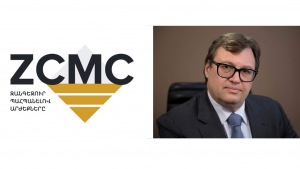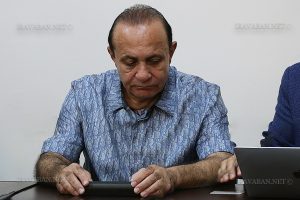Karen Zadoyan, President of the Armenian Lawyers’ Association, informs about the discussion on Transitional Justice with the Minister of Justice.
“During the working discussion with Justice Minister Artak Zeynalyan a few days ago, I proposed to organize a civil society – government forum in the near future to discuss the strategies for the introduction of transitional justice, anticipated outcomes and possible risks in Armenia.
Since Prime Minister Nikol Pashinyan highlighted the introduction of transitional justice in Armenia during the yesterday’s rally, I would like to briefly present this information on transitional justice prepared by our experts’ of our organization.
Brief overview on Transitional Justice
Definition and general description:
Transitional justice is a complex of judicial and non-judicial, informal and non-formal, punitive and rehabilitative measures that are applied in countries in the event of a military conflict or a repressive regime to compensate for the huge damage and to establish peace and solidarity.
Transitional justice is based on the Universal Declaration of Human Rights as well as the UN Charter.
Transitional justice cannot be considered a clear and mild form of implementation of justice. It is a system of approaches to achieve justice. There is a need to apply transitional justice in countries where pressures and conflict situations have resulted in numerous and repeated recurring violations of human rights so serious that the usual justice system is not able to provide adequate solutions. It should be noted that such violations should have infringed people’s political and civil rights.
Transitional justice is based on compensation for victims. Thus, the individual – the victim in this case, are considered as a priority, and appropriate measures are undertaken to protect people from abuse of their own authorities and to ensure their safety.
When speaking about transitional justice, it is necessary first of all to find out whether the state is in the transitional phase or not. The question is whether the opportunity to resolve grave or gross violations has been given, even if such a possibility is limited.
Such opportunities often arise in peaceful processes aimed at resolving military conflicts when, for example, the negotiating parties may include a range of justice-related issues in the dispute resolution agreement. These issues can be addressed by the requirements of civil society and victim groups dealing with justice issues. Colombia, Guatemala, El Salvador, Sierra Leone, the Democratic Republic of the Congo, Liberia, South Sudan, the Philippines, Nepal, and other countries are among such examples. In some of these countries, the rampant conflict was also accompanied by repressive regimes in the country.
The Purpose of Transitional Justice.
The objectives of transitional justice may be numerous, depending on the situation, but the main purpose is to respect the dignity of individuals, to eliminate the violation of the rights of individuals and undertake preventive measures to exclude their subsequent repetition. As a result, justice, peace between the society and the authorities should be established, and the public trust in the state should be restored.
It can be said that transitional justice aims to create accountable institutions, which existence and activity will restore social trust. Additionally, it aims to make justice more accessible to vulnerable people and the victims of crime.
Governing Principles of Transitional Justice:
Complexity: Transitional justice measures are more effective when they complement each other within the scope of transitional justice strategy. When choosing each tool it is necessary to take into account its effectiveness on a particular situation, local priorities, limitations and opportunities.
Transparency, independence and impartiality: Measures of transitional justice should be taken as legitimate primarily by the victims and the general public. The low level of trust towards state institutions often occurs in societies that inherited ill-treatment by the authorities. Transitional justice measures should be developed and introduced in such a way that they will be independent of political manipulation and external interference, fair and equitable treatment for all parties and are open to public control. Without these structural guarantees, it is unlikely that the public will trust these institutions, its processes and conclusions. This can lead to the impossibility of restoring confidence in the government and damage the possibility of reconciliation, or give rise to a new dispute.
Advisory and Active Participation: Consultation with a wide range of stakeholders is crucial to the development and implementation of transitional justice. Interested people may include minority groups, representatives of the Diaspora, persons outside the government, local self-governing bodies, vulnerable groups, such as women, youth, ethnic minorities, victims, etc.
Gender involvement: Gender mainstreaming should be integrated in all initiatives in transition justice. Ensuring gender equality means not only the elimination and prevention of impunity of sexual and gender-based violence, but also the provision of equal access to restoration of damages resulted by the violation of human rights and abuses within the framework of post-conflict reforms.
Arrangement from context: Transitional justice measures should be consistent with the cultural, judicial, legal and economic context. Their formation should be done so that they are adequate to the extent and nature of abuses and violations on the one hand, and to the priorities and requirements of the victims on the other hand.
Interaction with the civil society: Civil society groups are often the partners that support justice and accountability, awareness on transitional justice issues, the formation of a new statehood and the development of consistency referring to human rights, as well as the training on reform processes. Where governments are not so willing to be involved in transitional justice, civil society organizations can lead processes by reminding governments of their respective commitments, as well as promoting non-formal searches of truth such as civic commissions, exhibition of art, or other artistic expressions relating to the history of violence and ill-treatment that work with communities to promote traditional reconciliation processes.
No damage: The safe environment is crucial for transitional justice. Despite the fact that full and complete security may require long-term system reforms, it is important to take into account the security of victims, witnesses, lawyers, prosecutors, judges, commissars and transitional justice personnel. It should be taken into account that the security of the participants cannot be ensured and be transparent so that all those involved in transitional justice processes can clearly grasp the potential risks.
Expectations Management: Transitional justice mechanisms are a whole set of tools that can help to meet the needs of transitional societies. Nevertheless, transitional justice is not a means of solving all the needs and problems of the society. Therefore, it is important to manage the expectations related to how the mechanisms of justice will function and what to expect from their implementation. It will contribute to the maximum achievement of the objectives of transitional justice.
Mechanisms and Obstacles for the implementation of Transitional Justice.
It is not always possible to achieve the objectives of transitional justice through the settlement of the dispute. For example, the Democratic Republic of the Congo, for a long time, was under a dictatorial regime. The number of victims of the 1996-1997 liberation war, as well as the war in 1998, is estimated to be around 3-4 million, not counting the number of people suffered from the dictator Mobutu.
As it was later recorded in the 2nd International Conference on Disarmament, Demobilization and Reintegration in Kinshasa on 12-14 June 2007, transitional justice was inefficiently applied and that ineffectiveness was linked to the fact that in order to achieve the dispute resolution priority was given to disarmament and in order to be able to disarm, demobilize and reintegrate around 330,000 participants of the dispute and they had to provide impunity guarantees to the field commanders. Moreover, in addition to the work aimed at their reintegration, activities aimed at boosting their social status as well as rapid demobilization of the military troop groupings under their command. As for justice, it did not achieve its goal, as the International Criminal Court found guilty only one person related to the perceived one person as guilty of those incidents.
The chosen measures under these conditions did not serve for the purposes of transitional justice and in addition became an obstacle to the investigation and disclosure of crimes. Such a situation may create a feeling of injustice for among the affected individuals, as it is clear to them that the international community not only guarantees the impunity of criminals, but also spare no means for reintegration of criminals by allowing them to hold responsible positions in the reorganized state security bodies, at the same time not being able to compensate for the damages caused to victims of crime.
These and similar examples show that transitional justice does not always provide solutions to all problems in post-conflict situations and it may face a number of obstacles related to the domestic or international situation of the country. For this reason, in each specific case, it is important to consider the effectiveness and reasonableness of the implementation of this mechanism in conjunction with international norms and, in particular, with punitive measures of justice.”















